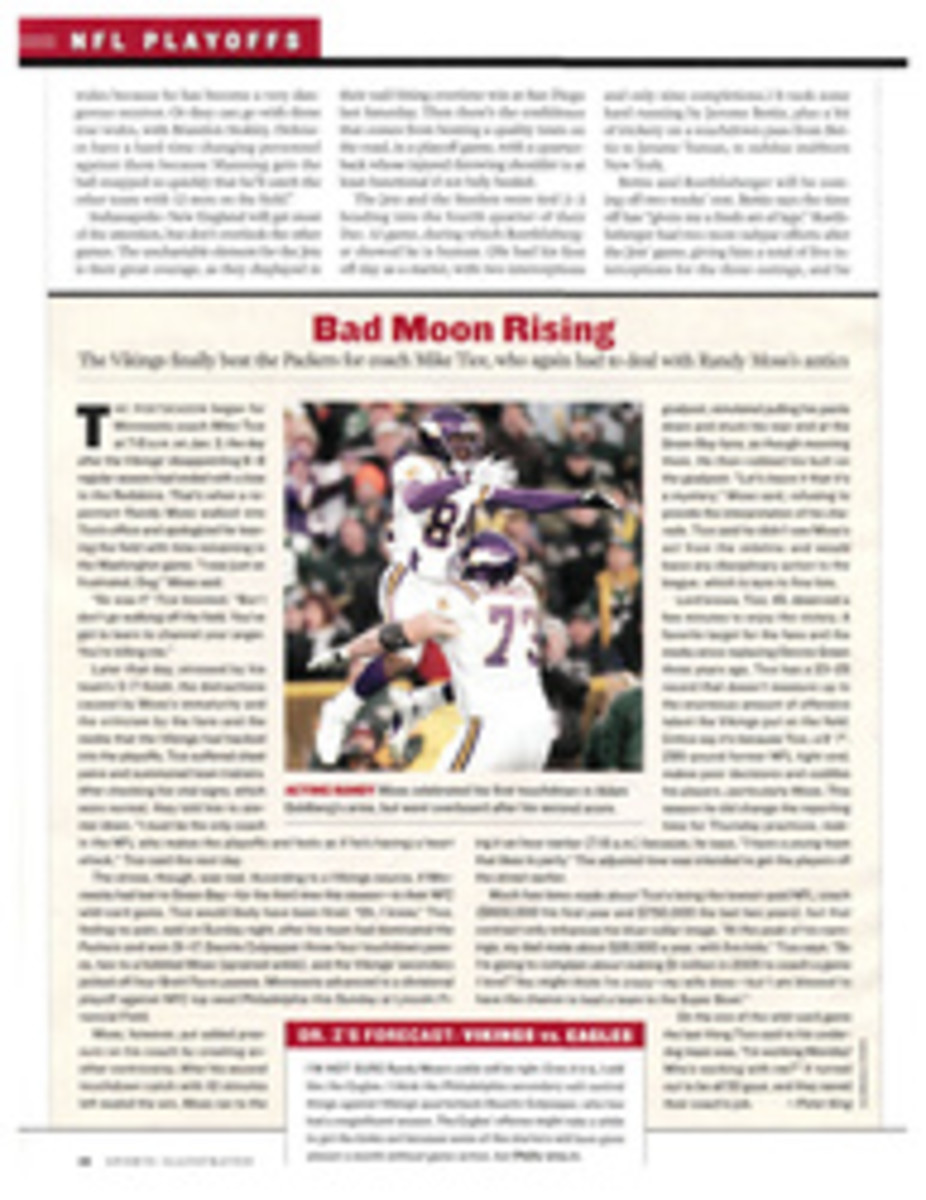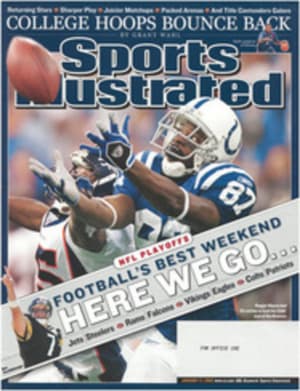
Gotta Know How to Hold 'em
With so many important games hinging on field goals made and missed, SI PLAYERS asked sportswriter and novelist Michael Grant Jaffe (above and right) to write about what it's like to be the holder for an NFL kicking unit. Jaffe, a Cleveland resident and Browns fan, called the team in November and was offered a brief tutorial with placekicker Phil Dawson, long snapper Ryan Pontbriand and holder Derrick Frost, and also a chance to hold during several field goal attempts in practice. This is his account of his slightly Plimptonian experience.
I'VE SEEN a thousand field goal attempts. And, like most fans who've watched their team bungle a snap, I have wondered aloud whether I could do better. If there's a role in professional sports for the average guy, I've long believed that this is it. Years at the foot of my television have taught me the sum of a holder's responsibilities: catch the ball, balance it against the ground and don't get kicked. Running? There's not even standing.
It didn't take long to discover that holding is serious business. My crash course in PATs reminds me of cramming for SATs. "It's a lot tougher than it looks," says Dawson, who's seventh alltime in NFL field goal percentage (81.8). Dawson says there are three things that make a good holder: Sure hands; an understanding of "the principles of kicking" (such as knowing that if you tilt the ball in certain directions, you can reduce the effect of wind); and the ability to manage the huddle ("Because the holder makes the protection calls, he has to pay attention to the defensive fronts and the play clock").
As I watch Pontbriand practice snaps with Frost, I'm struck by the speed of the ball--it whistles--and Pontbriand's gift for repeatedly hitting the target of Frost's hands. "I think of myself as the Picasso of long snappers," says Pontbriand, whom the Browns selected out of Rice in the fifth round of the 2003 draft, making him the highest-picked long snapper in NFL history.
A large part of a kicker's success is based on the consistency of the hold. The ball must be in the same place at the same time on every snap. Most kickers prefer it in a vertical position, laces aimed toward the goalpost. This is called "laces out."
"When the kicker sees a flash of white facing him [on his approach]," says Frost, referring to the laces, "nothing good is going through his head."
Because I want a total experience, I'm awarded a corner in the locker room to dress in pads and game-day uniform. My jersey has the number 0 stitched across its front and back. That's the same number zero worn by George Plimpton during his Paper Lion days as a quarterback in Detroit--and it's not the only intimidating number I'm dealing with. Special teams coordinator Jerry Rosburg tells me how much time he allows for the ball to be snapped and kicked. "We have a slot from 1.28 seconds to 1.32 seconds," he says. "Anything more, and we're risking the danger of edge pressure [defenders coming through the line on the ends] reaching the ball."
The time frame sounds so implausible that I'm certain Rosburg misspoke. Still I nod, idiotically, when asked if I'm ready to try my hand(s). Dawson uses the toe of his right shoe to set his mark [the spot where the ball should be placed] at slightly less than eight yards behind the line of scrimmage. He measures where he should stand four paces back from his mark and two paces to the left. I take my position, crouching between Dawson and Pontbriand. Before catching my first snap, Frost hands me a ball that's darker and shinier than the others. This is the special K-ball, used only on kicking downs. "It's the holder's responsibility," says Dawson, "to find the ball boy with a big K on his chest."
K-balls have higher laces and more pronounced seams because they aren't worn and are fresh out of the box. They're harder and slicker, still coated in a waxy sheen, making them difficult to handle in wet weather.
Staring into the spandex cannon that is Pontbriand's backside, I swallow hard and call for the snap--saying, "Ready. Set. Hut!" The ball is discharged through Pontbriand's legs in perfect fashion, never rising more than 18 inches from the field's surface. It reaches me so swiftly, with the heft of a cinder block, that my instincts are to recoil. But I catch the ball. I'm so pleased, I nearly forget my other duties.
Dawson begins his approach the moment the ball is snapped. The process occurs at hyperspeed, and I barely manage to land the football on turf. Regrettably, the ball now rests on its side, my finger balanced against its bloated waist. And Dawson shanks it.Badly.
I apologize several times, worried I may have injured his foot because the ball wasn't in the proper spot. (Dawson is fine and waves me off.) We try again. As he did the first time, Pontbriand controls the ball's revolutions (after years of practice he knows what the ball will do if I'm in the right place), helping ensure that I catch it with the laces in the proper spot. But I am slow in setting the ball, and I have trouble steadying it with a single finger, so I decide to use three (kickers prefer holders use one so there's no chance of the ball glancing off the hand). I think I am at least holding it vertically, but I'm not. From the holder's perspective, I realize, it's hard to tell. "You think it looks straight," Frost says later, "but that's an optical illusion." I tell them I can't imagine what this must be like with a stampede of 300pound linemen coming at you. "Do your job properly," says Rosburg, "and it's not a factor--the ball's already gone."
Although Dawson's second kick splits the uprights, we reach a consensus that I'm not nearly ready for a "Banzai field goal"--a dash from the sideline with time expiring--and instead complete my baptism with a couple of attempts at full speed. (The previous snaps had been at three-quarters velocity.) Pontbriand's first snap feels as if it has shattered my left hand. My thumb soon resembles a throbbing cartoon finger yanked from beneath an anvil.
Though Dawson is successful on three of four kicks, I'm disappointed when Rosburg announces the times. My best, 1.38 seconds, fails to meet the team's standard by .06 of a second. I feel like a failure, but Dawson smiles. He raises his arms to signal a score. "It was good," he says. "And that's all that matters."
TWO COLOR PHOTOS
Photographs by Thomas E. Witte
COLOR PHOTO
Photographs by Thomas E. Witte
"My left thumb resembles a throbbing cartoon finger yanked from beneath an anvil."
COLOR PHOTO
Photographs by Thomas E. Witte
BOOT CAMP
Dawson (No. 4) is one of the NFL's most accurate kickers, but Jaffe's inexperience made him shank one.

